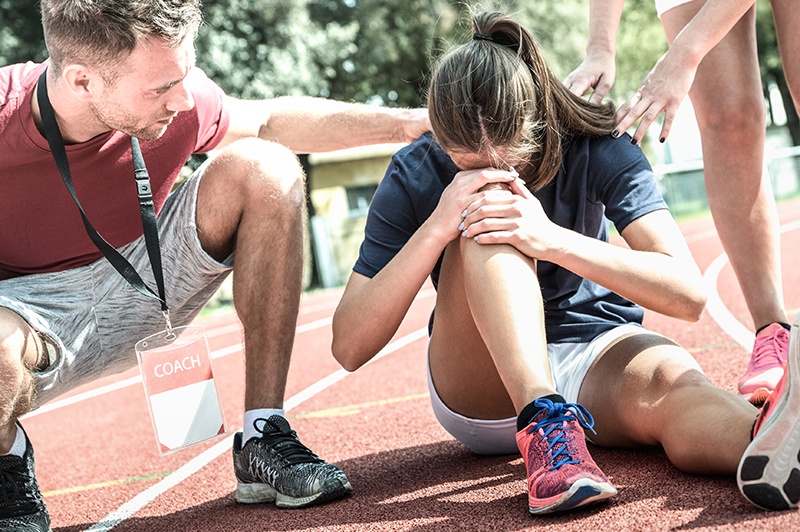Summer is the peak time for outdoor sports injuries as people of all ages eagerly embrace the warm weather and engage in various physical activities. With more individuals participating in sports such as soccer, baseball, swimming, cycling, and hiking, the likelihood of accidents and injuries rises significantly. Common outdoor sports injuries include sprained ankles, torn ligaments, fractures, sunburns, and heat-related illnesses. The combination of intense physical exertion, uneven terrain, and exposure to the elements creates a higher risk for accidents, especially when players fail to take necessary precautions such as wearing proper protective gear and staying hydrated.
The increased popularity of outdoor activities during this season means a greater chance of accidents and mishaps. From amateurs to seasoned athletes, everyone may be susceptible to injuries ranging from minor cuts and bruises to more serious concerns such as concussion and heat stroke. With the sun beating down, the risk of dehydration and heat-related illnesses also escalates, especially in high-intensity sports such as football and long-distance running. Summer outdoor sports injuries must be documented clearly. Accurate medical coding services for common summer outdoor sports injuries is vital for healthcare practices to ensure appropriate treatment, proper billing and insurance processes, and continuity of care. Medical coding plays a significant role in insurance claims processing and medical billing. If the injury is not coded accurately, it may lead to claim denials, delayed reimbursements, or even incorrect charges for the patient.
ICD-10 Codes for Summer Outdoor Sports Injuries
- Sprains and Strains: These are common in sports that involve running, jumping, and sudden changes in direction, such as soccer, basketball, and tennis. Ankle sprains and muscle strains are typical examples.
- S03 Dislocation and sprain of joints and ligaments of head
- S09.11 Strain of muscle and tendon of head
- S33 Dislocation and sprain of joints and ligaments of lumbar spine and pelvis
- S93 Dislocation and sprain of joints and ligaments at ankle, foot and toe level
- S03 Dislocation and sprain of joints and ligaments of head
- Fractures and Dislocations: High-impact sports such as skateboarding, biking, and rollerblading can lead to fractures and dislocations, especially when accidents happen due to falls or collisions.
Fractures
-
- S42 Fracture of shoulder and upper arm
- S52 Fracture of forearm
- S72 Fracture of femur
Dislocations
- S43 Dislocation and sprain of joints and ligaments of shoulder girdle
- S73 Dislocation and sprain of joint and ligaments of hip
- S83 Dislocation and sprain of joints and ligaments of knee
- Sunburn and Heat Exhaustion: Prolonged exposure to the sun during outdoor sports can cause sunburns, which can range from mild to severe. Additionally, the hot weather can cause heat exhaustion or heat stroke if players don’t stay properly hydrated and take adequate breaks.
- L55 Sunburn
- L55.0 Sunburn of first degree
- L55.1 Sunburn of second degree
- L55.2 Sunburn of third degree
- L55.9 Sunburn, unspecified
- L55 Sunburn
-
- T67.5 Heat exhaustion, unspecified
- T67.5XXA …… initial encounter
- T67.5XXD …… subsequent encounter
- T67.5XXS …… sequela
- T67.5 Heat exhaustion, unspecified
- Overuse Injuries: Participating in sports frequently without enough rest can lead to overuse injuries such as tendinitis, stress fractures, and muscle strains. Sports such as long-distance running and cycling are more prone to such injuries.
- M70.9 Unspecified soft tissue disorder related to use, overuse and pressure
- M70.90 …… of unspecified site
- Concussions: Contact sports such as football, rugby, or even casual beach volleyball can lead to concussions if players experience collisions or falls without appropriate head protection.
- S06.0 Concussion
- Effects of drowning and nonfatal submersion: Swimming and water sports pose the risk of drowning if proper safety measures and supervision are not in place.
- T75.1 Unspecified effects of drowning and nonfatal submersion
- T75.1XXA …… initial encounter
- T75.1XXD …… subsequent encounter
- T75.1XXS …… sequela
- T75.1 Unspecified effects of drowning and nonfatal submersion
- Cuts and Abrasions: Activities such as rock climbing, trail running, or any sport with rough surfaces may cause cuts, scrapes, and abrasions.
- S00.21 Abrasion of eyelid and periocular area
- S00.41 Abrasion of ear
- S20.41 Abrasion of back wall of thorax
- S40.81 Abrasion of upper arm
- S50.31 Abrasion of elbow
- S80.81 Abrasion of lower leg
- Insect Bites and Stings: Outdoor sports in wooded areas or near bodies of water can expose individuals to insect bites and stings, which can cause allergic reactions or infections.
- W57 Bitten or stung by nonvenomous insect and other nonvenomous arthropods
To prevent these injuries, participants should engage in proper warm-up exercises, wear appropriate protective gear, follow safety guidelines, stay hydrated, and know their physical limitations. Additionally, having access to first aid and knowing basic emergency protocols are crucial in handling injuries promptly when they occur.
In a healthcare practice, proper medical coding and billing services help streamline the administrative side, ensuring that patients receive the coverage they are entitled to and healthcare facilities are appropriately reimbursed for their services.
Optimize medical billing and reimbursement with our reliable coding services!






